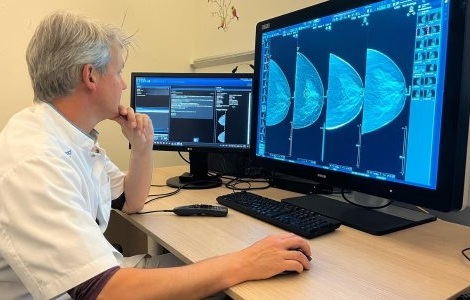Researchers Provide Suggestions to Avoid Errors in Pediatric Chest Radiography
By Andrew Deutsch
Posted on 23 Nov 2016
The authors of a new study into the challenges of pediatric chest radiography have come up with new guidelines that include a better understanding of the development, and anatomy and children, and a more systematic approach to image interpretation.Posted on 23 Nov 2016
The guidelines are necessary because when imaging children it is often difficult to get their cooperation and keep them in the optimal position. The paper lists the common problems that occur during pediatric chest radiography and describes how these can be overcome.

Image: A new study offers new tips for radiographers to help them perform chest radiography in children (Photo courtesy of UW Medicine).
The results of the study were published in the October 2016 issue of the American Journal of Roentgenology. The title of the study is: "Pediatric Chest Radiographs: Common and Less Common Errors."
To keep the radiation dose for children as low as possible radiologists are careful in recommending additional projections, follow-up radiographs, or additional cross-sectional imaging. In addition, a systematic approach for image interpretation, and an awareness of common errors and their causes, can help clinicians reduce errors, and provide more accurate interpretations.
Co-author of the study A. Luana Stanescu, Seattle Children's Hospital, University of Washington School of Medicine (UW Medicine; Seattle, Washington, USA), said, "Having a thorough understanding of normal pediatric anatomy and developmental changes along with a good command of the entities unique to children is essential for the pediatric and general radiologist to avoid significant interpretive errors," said paper "Errors in interpretation may lead to inappropriate further imaging, incurring additional radiation exposure and cost, as well as psychologic effects on the patients and their families. In our study, we highlight some common and less common pitfalls in pediatric chest radiography, in addition to discussing some tools for avoiding potential mistakes."
Related Links:
University of Washington School of Medicine






 Guided Devices.jpg)







